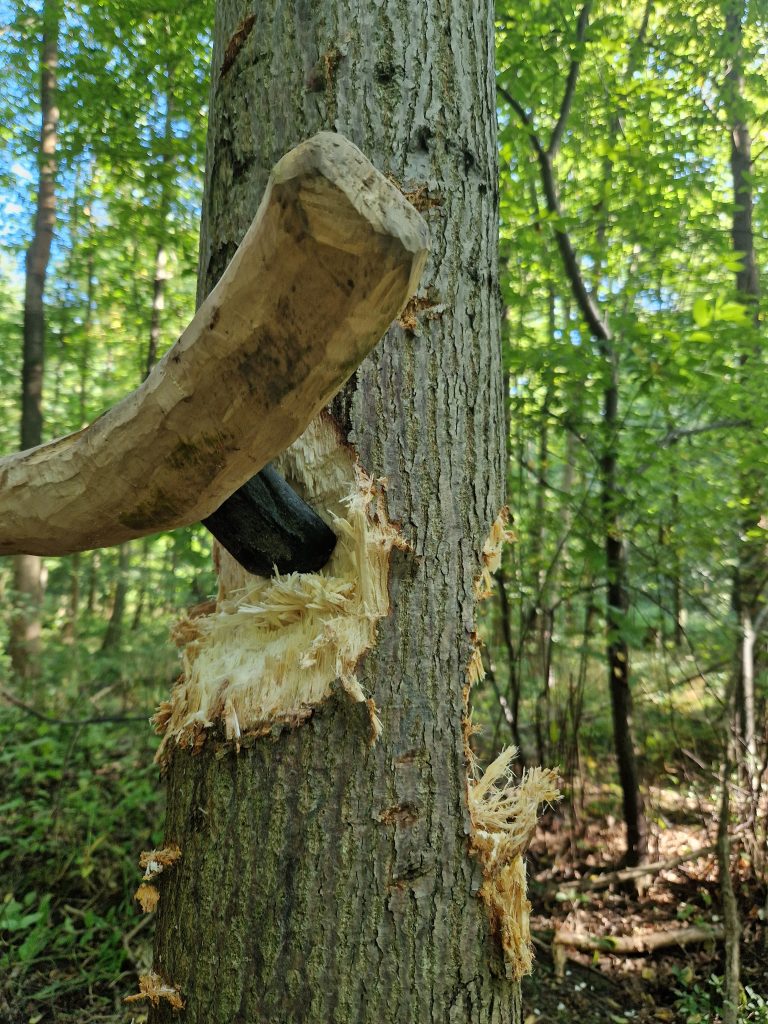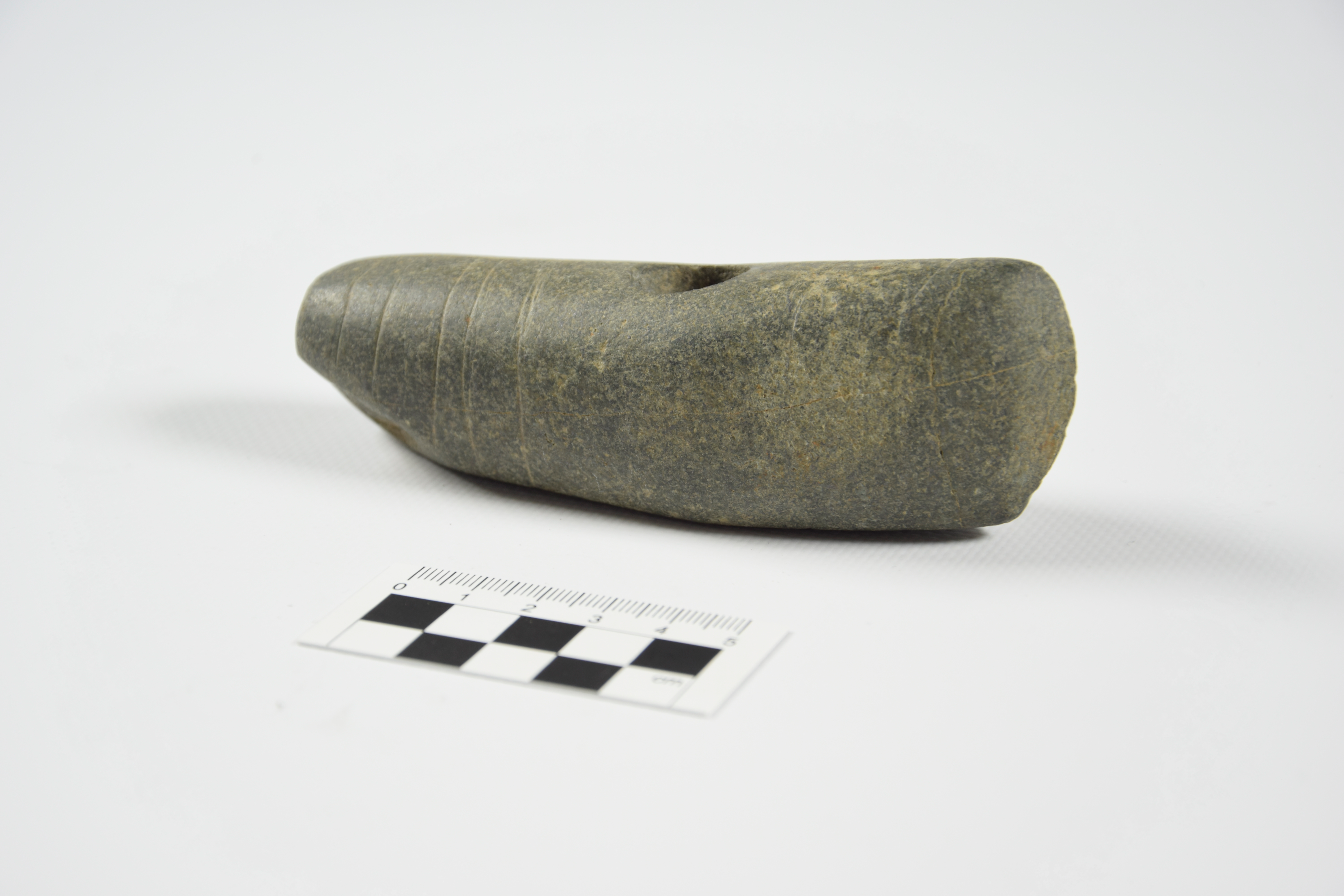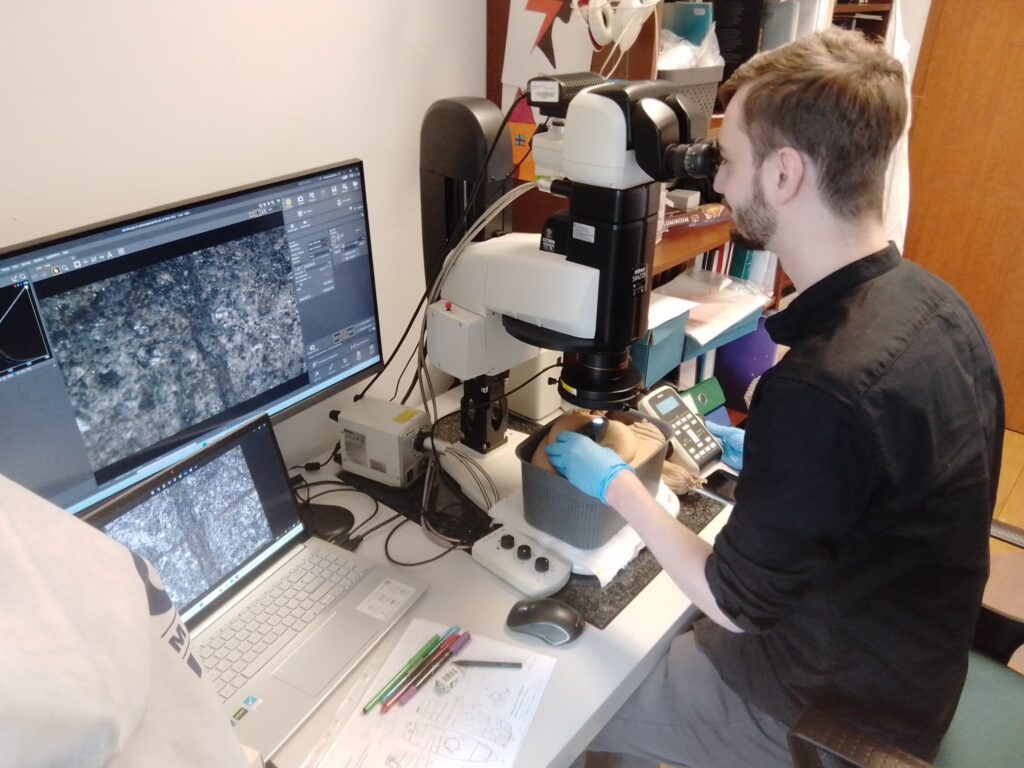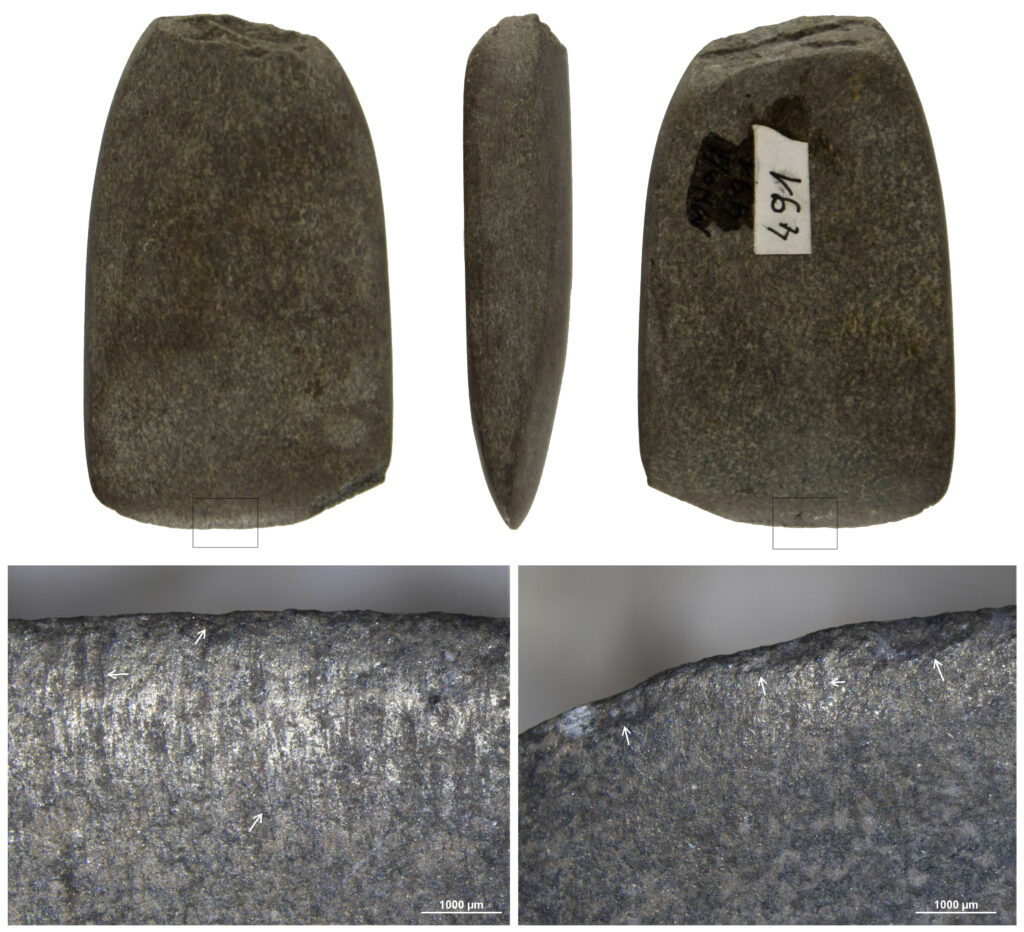
About project
Macro-lithic objects made from non-flint rocks are one of the most abundant artefact categories in the prehistoric archaeological assemblages that survived thousands of years. Artefacts made from igneous, sedimentary and metamorphic rocks are found at the Neolithic sites in Europe regardless of the site function and chronology. The group of macro-lithic objects includes a wide range of types, such as querns, grinding slabs, handstones, abraders, polishers, axes, adzes, chisels, and others; usually defined by their shape, size and macroscopically visible working part. Although present in the literature, the discussion mainly refers to the typology and raw material, while the function of stone tools seemed to be too obvious for debate.
Most of the functional studies on the Neolithic collections are focused on objects made of siliceous rocks and bones. The interpretation of use patterns of large, flat stones, spherical erratics or adzes is rarely based on observation of usewear traces. Generally, the published possible functions of the stone tools can be divided into two main groups of interpretations: grinding and chopping. As a result, the archaeological inventories include grinders, axes, hammers, etc. Microscopic studies of stone surfaces modified by use were initiated in the late 80s in the USA. Nevertheless, due to the variety of rocks offered by erratic and primary deposits in Europe, every research project requires individual scientific protocol and adequate experimentally produced reference materials.


This project is focused on the functional identification of more than 1500 macro-lithic objects from the Neolithic sites located in the Silesia Lowland and the Sudety Foreland in SW Poland, particularly in the region limited by three rivers: Nysa Kłodzka, Kaczawa and Widawa. This region is rich with fertile soils, rivers and streams and well-accessible mineral resources, including clay, siliceous and non-siliceous rocks and attracted groups of people identified with the Neolithic cultural traditions whose life, food processing and subsistence strategies were based on farming and husbandry. In this part of Poland, we notice dense clusters of the Neolithic settlements dated back to the 6th-3rd millennia BCE (Linear Pottery culture, post-linear traditions, Lengyel culture, Funnel Beaker culture, Globular Amphora culture, Corded Ware culture). Stone tools under study are made from various types of rocks, among which sandstone, metabasite, serpentinite, quartzite, amphibolite and granite are the most common. The real function of these objects is written in traces, residues and context of the deposition.
The following analytical methods, laboratory devices and technologies will be employed in this study: usewear analysis (optical microscopy) for detecting traces of production and use of the tools, combined with experimental works necessary to collect reference materials (usewear patterns); starch and phytolith analysis (optical microscopy with polarization and fluorescence) for identifying plants species processed with stone tools; mineral residue analysis (SEM, X-ray analyser EDAX) for identifying pigments; petrographic analysis for determining or verifying raw material used to produced stone tools; 3D analysis of selected tools (NextEngine 3D Scanner Ultra HD, Scan Studio ProScan ver. 2.0.2 software) for comparative morphometric analysis of artefacts, detecting modification of tools as a result of use and repair; spatial analysis (GIS) for analysing distribution of tools and identification of deposition practices. All these methods provide the data on types of activities performed and the material processed with the stone tools, duration of use, the technology of manufacture, hafting methods, curation and modification practices (maintenance, repairs and storage). The results of the analysis are used to trace the life histories of the macro-lithics from the perspective of the long-lasting and highly differentiated cultural traditions, observed in a region densely settled in the Neolithic. They generate the discussion on the economic role of macro-lithic tools in everyday life (subsistence, craft, socio-economic relations, exchange) and on the significant character of the objects as social and symbolic communicators (individual identity, funerary practice).
